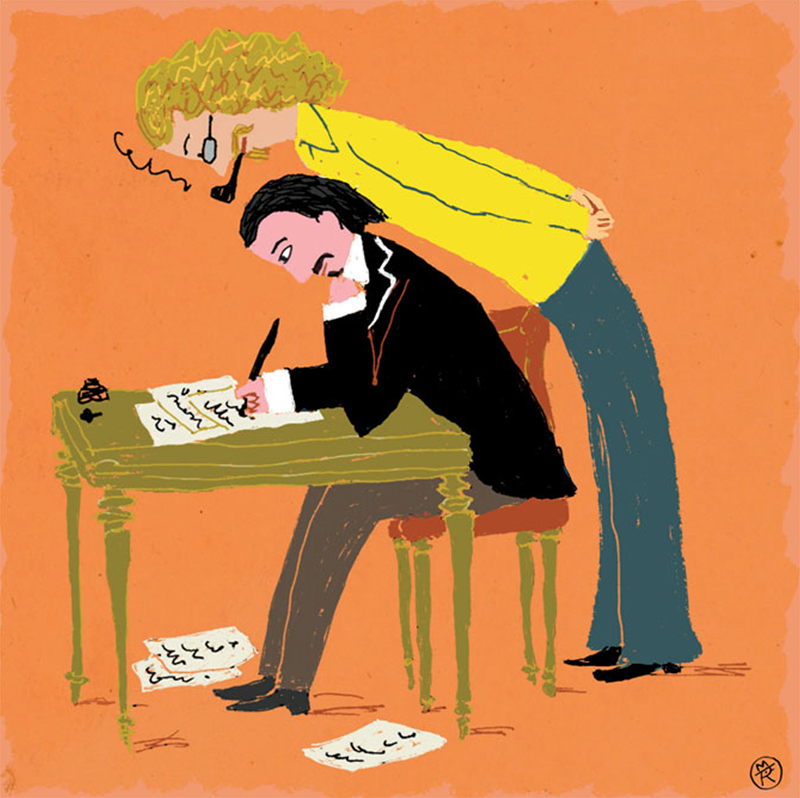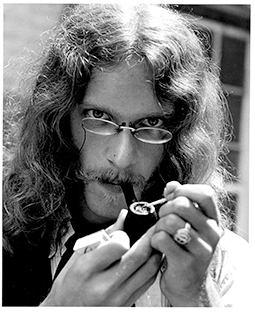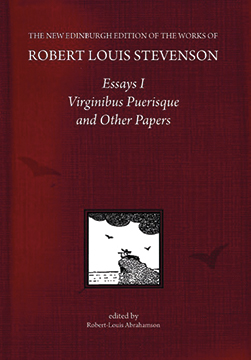

In college, Abrahamson adopted
his namesake’s style of dress and
manner of speaking.
Photo by Robert-Louis Abrahamson
This slim, packed volume is the first of five collections of Robert Louis Stevenson’s essays that will appear in the authoritative, modern 39-volume New Edinburgh Edition planned for the author’s collected works. Abrahamson (known as RLA to his Amherst friends) has produced a wide-ranging and deeply knowledgeable edition that has the charm and perspicuity of Stevenson (RLS) himself.
At Amherst RLA was well-known to students and faculty because, apparently fulfilling his father’s wishes for his infant son, he adopted the style of dress and manner of speaking of his namesake, RLS. That did not seem unusual to us—it was the late 1960s, after all. A junior year abroad in Edinburgh confirmed his Scottish persona. RLA went on to an English Ph.D. at Rutgers and a successful career teaching a wide range of literature to U.S. military men and women serving in England, through the University of Maryland overseas program.
The book opens with a general introduction to Stevenson’s essays—a collaborative work by the series’ four editors—and then offers an extensive introduction to Virginibus Puerisque itself, followed by copious explanatory notes.
This edition has the charm and perspicuity of Stevenson himself.

Virginibus Puerisque and
Other Papers
By Robert Louis Stevenson
Edited by Robert-Louis
Abrahamson ’71
Edinburgh University Press
Originally published in 1881, Virginibus Puerisque has a secure place in the history of the English familiar essay, being much admired and often reprinted. RLS took its title from Horace’s Odes III.1, in which the poet says he will sing a song “of [or for] maidens and youths.” The first four essays in Virginibus Puerisque discuss the merits and pitfalls of marriage from the viewpoint of a young man (maidens appear mainly in the title). Most of the essays were written during RLS’s mid- to late 20s, though the voice we hear sounds older and wiser. He’d proposed to his publisher a series of disparate essays on “aesthetic contentment and a hint to the careless to look around them for disregarded pleasure” to be taken in enjoying the things of this world. So among the “Other Papers” we find such topics as “Child’s Play,” “An Apology for Idlers” and “Walking Tours.” (The last should only be attempted alone, without a companion.)
RLS’s style is undogmatic, playful, both charming and intellectually penetrating. Chip Tucker ’71, now an eminent Victorian scholar, recalls that, upon first coming upon the book—courtesy of RLA—he was blown away by “the urbane energy that drives the essays unpredictably forward and sideways.” Beyond the sheer fun of following RLS’s shifts of subject and perspective, the reader soon sees a coherent and admirable attitude toward life: the ready acceptance of paradoxes, and a willingness to see both sides of a question without deciding between them.
The introduction and the discussion of “Stevenson as Essayist” (an article in its own right), along with RLA’s copious notes, make it easy to understand and enjoy reading Stevenson in his historical and literary contexts. The whole book is meticulously edited and sets a high standard for further volumes in the series, which will include, in 2020, Essays II: Familiar Studies of Men and Books, edited by Abrahamson and Richard Dury.
Chickering is Amherst’s G. Armour Craig Professor of Language and Literature, Emeritus.